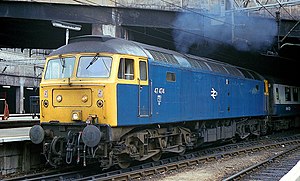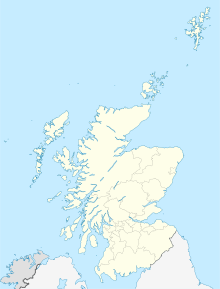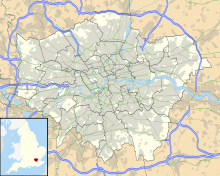
The British Rail Class 57 is a type of diesel locomotive that was remanufactured from Class 47s by Brush Traction of Loughborough between 1998 and 2004.

The British Rail Class 40 is a type of British railway diesel electric locomotive. A total of 200 were built by English Electric between 1958 and 1962. They were numbered D200-D399. They were, for a time, the pride of British Rail's early diesel fleet. However, despite their initial success, by the time the last examples were entering service they were already being replaced on some top-level duties by more powerful locomotives. As they were slowly relegated from express passenger uses, the type found work on secondary passenger and freight services where they worked for many years. The final locomotives ended regular service in 1985. The locomotives were commonly known as "Whistlers" because of the distinctive noise made by their turbochargers.
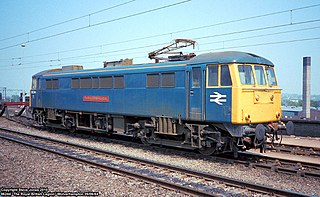
The British Rail Class 86 is a class of electric locomotives built during the 1960s. Developed as a 'standard' electric locomotive from earlier prototype models, one hundred of these locomotives were built from 1965 to 1966 to haul trains on the then newly electrified West Coast Main Line (WCML) from London Euston to Birmingham, Crewe, Liverpool, Manchester and later Glasgow and Preston. Introduction of the class enabled the replacement of many steam locomotives, which were finally withdrawn by British Rail in 1968.
British Rail reserved the TOPS Class 97 designation for departmental locomotives, which were used for special or engineering duties. They were therefore of several different classes, lumped together for numbering purposes. Some locomotives were converted from redundant engines, whilst others were purpose built. In 2008, Network Rail once again used Class 97 for signalling test locomotives.
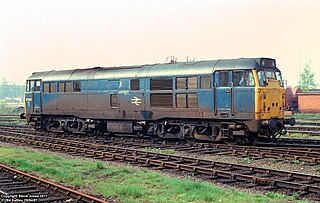
The British Rail Class 31 diesel locomotives, also known as the Brush Type 2 and previously as Class 30, were built by Brush Traction from 1957 to 1962. They were numbered in two series, D5500-D5699 and D5800-D5862. Construction of the first locomotive was completed in the final week of September 1957, and the handing-over took place on 31 October. The first Class 31 entered service in November 1957, after the launch of the Class 20 locomotive and was one of the Pilot Scheme locomotives ordered by British Railways to replace steam traction.

The British Railways Class 24 diesel locomotives, also known as the Sulzer Type 2, were built from 1958 to 1961. One hundred and fifty-one were built at Derby, Crewe and Darlington, the first twenty of them as part of the British Railways 1955 Modernisation Plan. This class was used as the basis for the development of the Class 25 locomotives.

The British Rail Class 73 is a British electro-diesel locomotive. The type is unusual in that it can operate from the Southern Region's 650/750 V DC third-rail or an on-board diesel engine to allow it to operate on non-electrified routes. This makes it very versatile, although the diesel engine produces less power than is available from the third-rail supply so the locomotives are rarely operated outside of the former Southern Region of British Rail. It is one of the first bi-mode locomotives ever built. Following the withdrawal and scrapping of the more powerful Class 74 bi-mode locomotives in 1977, the Class 73 was unique on the British railway network until the introduction of the Class 88 bi-mode locomotives in 2017. Ten locomotives have been scrapped.
A number of different numbering and classification schemes were used for locomotives and multiple units operated by British Railways (BR), and this page explains the principal systems. This section also covers the post-privatisation period, as the broad numbering and classification arrangements have not altered since the break-up of BR.

HS4000 Kestrel was a prototype high-powered mainline diesel locomotive that was built in 1967 by Brush Traction, Loughborough, as a technology demonstrator for potential future British Rail and export orders. The locomotive number is a combination of the initials of Hawker Siddeley and the power rating of its Sulzer diesel engine (4,000 hp), making it the most powerful locomotive built by the company.

D0260, named Lion, was a prototype Type 4 mainline diesel-electric locomotive built in 1962 by a consortium of Birmingham Railway Carriage and Wagon Company, Sulzer the engine maker and Associated Electrical Industries, at BRCW's Smethwick works near Birmingham.

The British Rail Class 37 is a diesel-electric locomotive. Also known as the English Electric Type 3, the class was ordered as part of the British Rail modernisation plan. They were numbered in two series, D6600–D6608 and D6700–D6999.

The British Rail Class 50 is a class of diesel locomotives designed to haul express passenger trains at 100 mph (160 km/h). Built by English Electric at the Vulcan Foundry in Newton-le-Willows between 1967 and 1968, the Class 50s were initially on a 10-year lease from English Electric Leasing, and were employed hauling express passenger trains on the then non-electrified section of the West Coast Main Line between Crewe and Scotland. Initially numbered D400–D449 and known as English Electric Type 4s, the locomotives were purchased outright by British Rail (BR) at the end of the lease and became Class 50 in the TOPS renumbering of 1973.
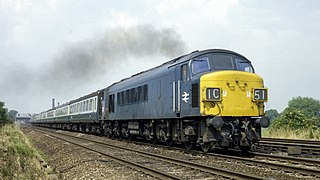
The British Rail Class 45 or Sulzer Type 4 are diesel locomotives built by British Railways' Derby and Crewe Works between 1960 and 1962. Along with the similar Class 44 and 46 locomotives, they became known as Peaks.

The British Rail Class 25, also known as the Sulzer Type 2, is a class of 327 diesel locomotives built between 1961 and 1967 for British Rail. They were numbered in two series, D5151–D5299 and D7500–D7677.

The British Rail Class 76, also known as Class EM1, is a class of 1.5 kV DC, Bo+Bo electric locomotive designed for use on the now-closed Woodhead Line in Northern England.

The British Rail Class 33, also known as the BRCW Type 3 or Crompton, is a class of Bo-Bo diesel-electric locomotives, ordered in 1957 and built for the Southern Region of British Railways between 1960 and 1962.

The British Rail Class 46 is a class of diesel locomotive. They were built from 1961 to 1963 at British Railways' Derby Works and were initially numbered D138–D193. With the arrival of TOPS they were renumbered to Class 46. Along with the similar Class 44 and 45 locomotives, they became known as Peaks.

British Rail's Class 27 comprised 69 diesel locomotives built by the Birmingham Railway Carriage and Wagon Company (BRCW) during 1961 and 1962. They were a development of the earlier Class 26; both were originally classified as the BRCW Type 2. The Class 27s were numbered D5347-D5415.
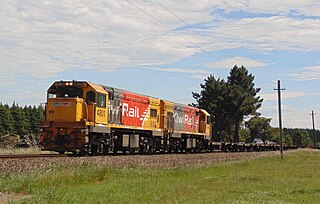
The New Zealand DC class locomotive is a type of diesel-electric mainline locomotive on the New Zealand rail network, operated by KiwiRail on freight trains, and formerly on long-distance passenger trains. The class was rebuilt from the DA class in the late 1970s and early 1980s, mainly in Australia. After the DA class, they were the most numerous class of diesel locomotive on New Zealand's railway network and remained numerically dominant until the mid-2010s when withdrawals began.

The British Rail Class 48 was a diesel locomotive class which consisted of five examples, built at Brush Falcon Works in Loughborough and delivered between September 1965 and July 1966. They were part of the British Rail Class 47 order, but differed from their classmates by being fitted with a Sulzer V12 12LVA24 power unit producing 2,650 bhp (1,976 kW), as opposed to the standard 12LDA28C twin-bank twelve-cylinder unit of the remaining fleet.
